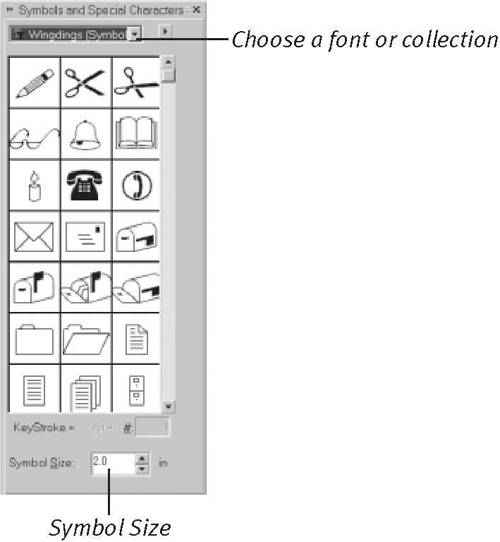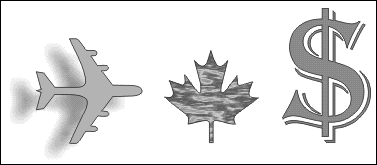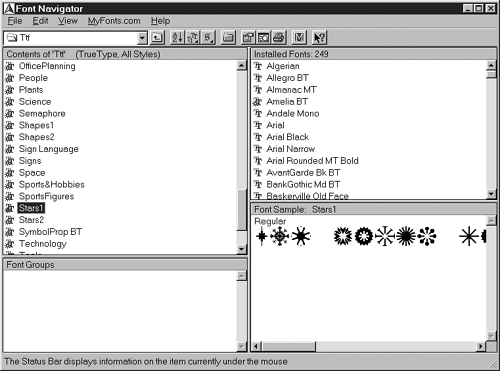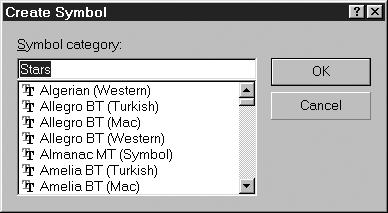In CorelDraw, you can add symbols to your documents
from fonts such as Wingdings and Zapf Dingbats. And you can take any
graphic that you've created and save it in a symbol collection for later
reuse.
1. Adding symbols to a document
There are two ways that a symbol character—or any
other text character, such as a number or foreign language
character—can be added to a document: embedded within artistic or
paragraph text or placed as a separate object. Within text, symbols can
be colored and formatted with the same commands used for normal text
characters. When placed as objects, symbols can be resized, extruded,
and manipulated like any other object.
To add symbols to a document:
1. |
Choose Tools > Symbols and Special Characters, choose Window
> Dockers > Symbols and Special Characters, or press  . .
The Symbols and Special Characters docker opens (Figure 1).

|
2. |
Select a font or symbol collection from the drop-down list.
|
3. |
Scroll down until you find the symbol you want.
|
4. |
To add a symbol to your document as a separate graphic object, click the symbol and drag it onto the document (Figure 2).

or
To add a symbol as text to an existing text string, position the
insertion marker within the text string and double-click the symbol in
the docker window (Figure 3).

|
Tips
You can set the size of a symbol using the Symbol Size text box.
Very
few symbol fonts are installed when you set up CorelDraw. To examine or
install these fonts, use the Bitstream Font Navigator program (Figure 4) that can be found in the Productivity Tools folder on your hard disk.

2. Creating your own symbols
You can also create custom symbols and add them to any existing symbol collection or start a new collection of your own.
To create a custom symbol:
1. |
Use the Pick Tool to select the object that you want to turn into a symbol.
|
2. |
Choose Tools > Create > Symbol.
The Create Symbol dialog box appears (Figure 5).

|
3. |
Select the symbol category in which you want to place the new symbol or type a new category name in the text box.
|
4. |
Click OK.
The new symbol and/or category is now available from within the Symbols and Special Characters docker.
|
Tips
Any graphic you elect to make into a
symbol must be composed of only one object (see the Help file for
eligible shapes). To make a multi-object graphic into a single object,
ungroup it (if it is grouped), and choose Arrange > Combine.
If
you attempt to add your symbol to an existing font, CorelDraw will
create a variation of the font with the word “(Symbol)” appended to it.